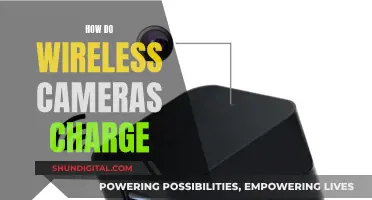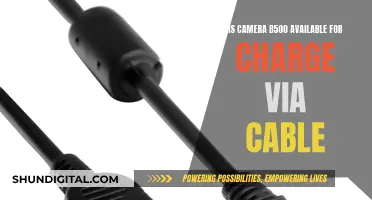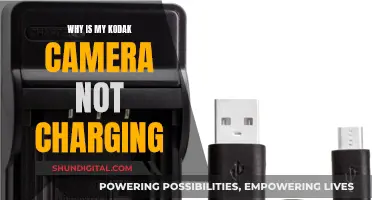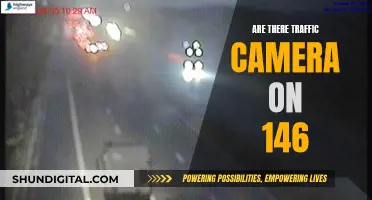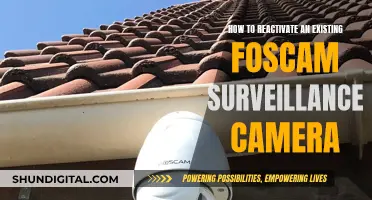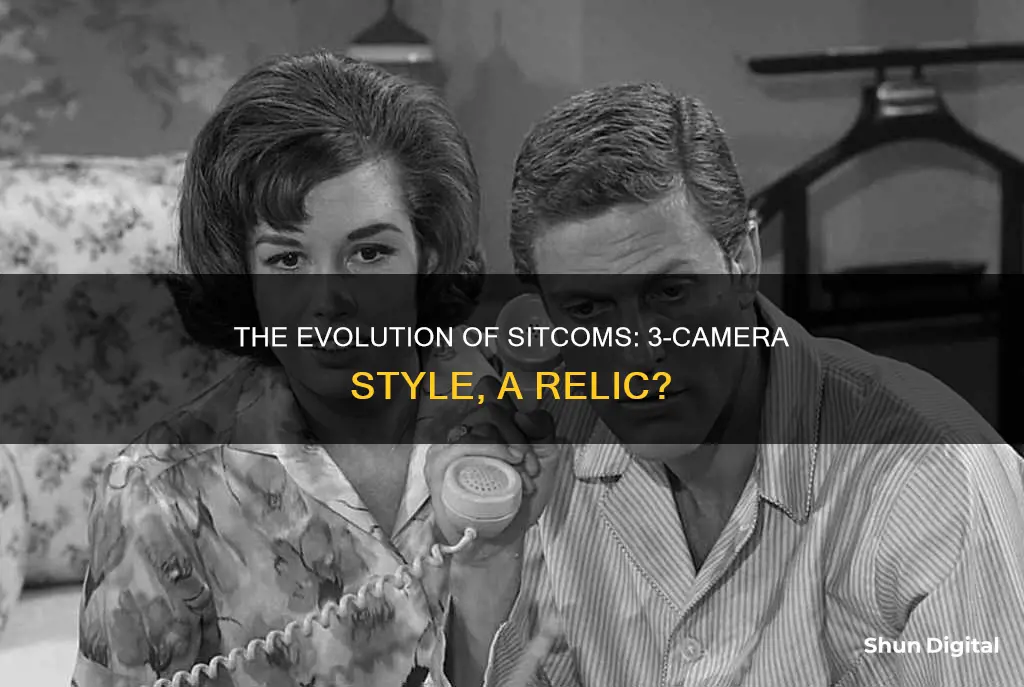
Three-camera sitcoms, also known as multi-camera sitcoms, are less common than they used to be. This is partly due to the rise of single-camera sitcoms, which have become more popular in recent years. Single-camera sitcoms are often more cinematic in style and don't usually have a live studio audience or a laugh track. In contrast, three-camera sitcoms are more like theatre, with actors performing in front of a live audience and multiple cameras capturing the necessary angles. While three-camera sitcoms used to dominate television, the format has evolved, and now single-camera sitcoms are more prevalent.
| Characteristics | Values |
|---|---|
| Number of cameras used | Single-camera sitcoms are often filmed with more than one camera, but the key element is that the show is shot without a live audience. Multi-camera sitcoms are filmed with multiple cameras, usually 5, in front of a live studio audience. |
| Style | Single-camera sitcoms are shot like films, with cinematic shots and angles. Multi-camera sitcoms are similar to live theatre. |
| Script length | Single-camera scripts are usually 22-32 pages long. Multi-camera scripts are 52-58 pages long. |
| Script format | Single-camera scripts are written in a standard format, much like feature film scripts. Multi-camera scripts have a more technical format, with all action and scene description in CAPS, character entrances and exits underlined, and double-spaced dialogue. |
| Production time | Single-camera shows are shot over a series of days. Multi-camera shows are shot over the course of 4 hours, with a live studio audience. |
| Cost | Single-camera sitcoms are more expensive to produce. Multi-camera sitcoms are cheaper. |
| Examples | Single-camera: Arrested Development, 30 Rock, Modern Family, Silicon Valley, The Office. Multi-camera: Friends, Cheers, Frasier, Seinfeld, The Big Bang Theory, The Dick Van Dyke Show, The Mary Tyler Moore Show, Three's Company, Family Ties. |
What You'll Learn

Single-camera sitcoms are more like films
Single-camera sitcoms are shot like films, with cinematic shots and angles storyboarded like movies. This gives them a more cinematic style and makes them resemble low-budget independent films. Single-camera sitcoms also tend to be shot without a live studio audience and don't use a replacement laugh track. This means that the humour in single-camera sitcoms is often more subtle and nuanced, as viewers have to actively find what's funny within a scene.
Single-camera sitcoms also tend to have more scenes and locations than multi-camera sitcoms, as they are not limited to a handful of sets. This allows for more storylines and characters, and gives the show a sense of the world it occupies. Single-camera sitcoms can also be more flexible in terms of shooting order and schedule, as they are not performed in order like a play.
The single-camera setup is more time-consuming and expensive than multi-camera shooting, as it gives the director more control over each shot. However, it also allows for more creative freedom and the use of specific camera angles and movements that can enhance the visual style of the production.
Overall, single-camera sitcoms offer a more cinematic and subtle approach to comedy, with a focus on character-driven humour and a more flexible production process.
Flying with Camera Gear: Safely Transporting Lithium-Ion Batteries
You may want to see also

Multi-camera sitcoms are like theatre
Multi-camera sitcoms are often compared to theatre productions due to their similar setups and use of theatre-experienced actors and crew members. They are usually performed in front of a live studio audience, much like a theatre play. The multi-camera setup is also known as a multiple-camera setup, multiple-camera mode of production, or multicam. It involves employing several cameras, either film or professional video cameras, on the set to simultaneously record or broadcast a scene.
In addition, multi-camera sitcoms often have a more technical approach to their scripts, with specific formatting requirements such as underlined character names and scene headings, and double-spaced dialogue. This is done to facilitate the production process and ensure that the show runs smoothly in front of the live audience.
Furthermore, multi-camera sitcoms often have a different style of humour compared to single-camera sitcoms. The presence of a live audience influences the delivery of jokes and the actors' performances. The actors' interactions with the audience and their ability to feed off the audience's energy create a unique dynamic that is similar to what is found in theatre productions.
Multi-camera sitcoms also tend to have a faster pace and more simplistic sets compared to single-camera sitcoms, which can be attributed to their theatre-like nature. Overall, the multi-camera sitcom format combines elements of film, radio, and theatre, resulting in a unique style of comedy that has been popular for many years.
Adjusting Midtones in Camera Raw: A Step-by-Step Guide
You may want to see also

Multi-camera sitcoms are cheaper to make
Multi-camera sitcoms are often compared to stage plays in their setup and blocking. They are usually filmed on a set with three walls, with the camera and audience forming the fourth wall. This setup allows for multiple cameras to capture the necessary angles and create a seamless viewing experience for the audience.
In contrast, single-camera sitcoms are more like feature films in their production and writing style. They are shot on location or on specially built sets, with dedicated crews and location scouts. Single-camera shows also tend to have longer scripts, typically ranging from 22 to 35 pages for a half-hour show, while multi-camera shows have shorter scripts due to their faster pace and reliance on physical comedy.
The longer production time and more complex shooting style of single-camera shows result in higher costs. Single-camera shows also require more time and effort from the cast and crew, with typical shooting schedules involving 10 months for 22 episodes, and 8 days per episode, with 12-14 hour workdays.
While multi-camera sitcoms are generally less expensive to produce, there have been successful multi-camera shows that have become more costly due to high cast salaries, such as "Friends" and "The Big Bang Theory".
In conclusion, multi-camera sitcoms are cheaper to make due to their simpler production style, shorter shooting schedules, and reliance on a live studio audience. Single-camera shows, on the other hand, incur higher costs due to their longer production times, more complex shooting style, and longer scripts.
Mastering the Art of Hiding Pins in Camera Raw Adjustment Brush
You may want to see also

Single-camera sitcoms have more locations
A single-camera show can take place in numerous locations, even within the same episode. For example, an episode of *Arrested Development* could take place in a California apartment complex, Iraq, on a boat, in a magic shop, at the beach, and in Reno, Nevada, all in the same episode.
Single-camera shows can also use different angles to make the same set feel fresh, and they can be shot out of order, giving them more flexibility than multi-camera shows, which are usually shot in order, like a play.
The more cinematic style of single-camera shows also lends itself to a different type of humour. Without a laugh track to signal punchlines, the humour in single-camera sitcoms is often more subtle, relying on the audience to actively find what's funny within a scene. This allows for more nuanced performances, where even the slightest eye roll can be caught in a close-up reaction shot.
The increased number of locations in single-camera sitcoms also allows for more storylines and characters. While a multi-camera sitcom usually has a primary cast of six or fewer, a single-camera show like *The Office* can have an ensemble of fourteen or more.
Undoing Actions: Camera Raw's Secret Superpower
You may want to see also

Single-camera sitcoms have more storylines
Single-camera sitcoms have seen a surge in popularity over the last decade, with shows like Modern Family, Silicon Valley, and The Last Man on Earth. While single-camera sitcoms are often filmed with multiple cameras, they are distinct from their multi-camera counterparts in terms of style, production, and storytelling.
Single-camera sitcoms offer a more cinematic approach to comedy, resembling low-budget independent films or screwball comedies. They are typically filmed without a live studio audience and lack a laugh track, allowing for a more subtle and nuanced style of humour. This format encourages viewers to actively engage and find the humour within a scene, often relying on the unique characteristics of the setting or the specific delivery of a line by a particular character.
The flexibility of single-camera sitcoms extends beyond their visual style. They can accommodate more scenes, storylines, and characters than multi-camera shows. While a multi-camera sitcom typically has a primary cast of six or fewer, single-camera shows like The Office feature ensembles of fourteen or more. This expanded format allows for more complex and diverse storytelling, with single-cam scripts including A, B, C, D, and even E plots, providing greater depth and substance to the narrative.
The production process of single-camera sitcoms also differs significantly. Unlike multi-cam shows, which are usually shot in order in front of a live audience over a few hours, single-cam shows are filmed more like movies, with shooting taking place over several days and greater flexibility in the order of scenes. This approach allows for location shooting and the use of different angles to make each set feel fresh and dynamic. However, this increased flexibility comes at a cost, as single-camera sitcoms are generally more expensive and time-consuming to produce.
In conclusion, single-camera sitcoms offer a unique format that enhances storytelling capabilities, allowing for more storylines, characters, and visual diversity. This format empowers writers to create complex and engaging narratives that push the boundaries of traditional situation comedies.
Charging the HP R847: A Step-by-Step Guide
You may want to see also
Frequently asked questions
A 3-camera sitcom is filmed with multiple cameras, usually 3 or more, capturing different angles of a scene. It is shot like a play in front of a live studio audience, with actors performing on a set with 3 walls and the audience forming the 4th wall.
Single-camera sitcoms are shot more like movies, without a live audience. They have a more cinematic style, resembling low-budget independent films. Single-camera sitcoms also tend to have more locations and more complex storylines as they are not restricted by the limited sets of a 3-camera sitcom.
While single-camera sitcoms have gained popularity in recent years, 3-camera sitcoms are still being made. Examples of recent 3-camera sitcoms include "The Big Bang Theory", "Mom", "The Millers", and "The Ranch".
Single-camera sitcoms provide more flexibility for experimentation with plotlines and types of humour. They also tend to have more complex storylines and locations, which adds to the sense of the world the show occupies. Additionally, single-camera sitcoms are now more viable financially due to advancements in digital video technology.
3-camera sitcoms are generally cheaper and faster to produce than single-camera sitcoms. They are also preferred by some actors as they provide immediate feedback from a live audience.



